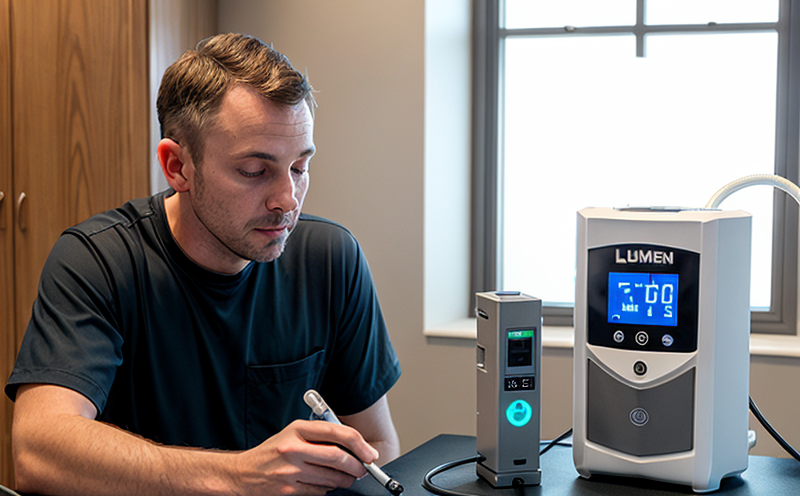ASTM D2565 Xenon Arc Exposure Lifetime Testing of Lighting Materials
The ASTM D2565 standard provides a method for evaluating the lumen maintenance and lifetime characteristics of lighting materials exposed to xenon arc radiation. This testing is crucial in ensuring that luminaires, lamps, and other lighting components maintain their performance over time under realistic operating conditions. The test simulates the effects of ultraviolet (UV), visible, and infrared light exposure, which are significant contributors to aging and degradation.
The ASTM D2565 method is particularly important for manufacturers who aim to meet regulatory standards and provide products with extended lifespans. By using this testing procedure, they can ensure that their lighting components will perform reliably over the intended service life, thereby improving product quality and customer satisfaction.
The test involves exposing specimens to a xenon arc lamp that simulates sunlight, artificial light sources, and other environmental factors that could affect the performance of the materials. The exposure duration is typically set according to the expected lifetime of the lighting component, with more severe conditions applied for shorter-lived products and less stringent conditions for longer-lasting ones.
The testing process is designed to mimic real-world conditions as closely as possible, ensuring that the results are representative of actual performance. This includes controlled temperature and humidity levels, which can significantly impact material degradation rates. The test specimens are subjected to a combination of high-intensity light exposure, heat cycling, and other environmental stresses.
The ASTM D2565 method is widely recognized for its accuracy and reliability in assessing the durability and performance of lighting materials. It allows manufacturers to identify potential issues early in the development process, enabling them to make necessary adjustments before product release. This not only improves product quality but also enhances brand reputation and customer trust.
The test results are typically reported as lumen maintenance factors (LMF) at specific intervals throughout the exposure period. LMF is a measure of how much light output has been maintained relative to the initial value, providing valuable insights into the long-term performance of the lighting materials. Additionally, visual inspection and other mechanical property tests may be conducted to assess any physical changes in the specimens.
By adhering to ASTM D2565 standards, manufacturers can ensure that their products meet stringent quality control requirements and comply with relevant regulations. This not only enhances product performance but also supports sustainable practices by extending the useful life of lighting components and reducing waste.
Applied Standards
| Standard | Description |
|---|---|
| ASTM D2565-18 | This standard specifies the procedure for exposing lighting materials to xenon arc radiation to determine their lumen maintenance and lifetime characteristics. |
| ISO 7043:2009 | International equivalent focusing on photometric stability of luminaires after accelerated weathering tests. |
Industry Applications
- Luminaire manufacturers: Ensure product reliability and compliance with regulations.
- Lighting fixture producers: Validate the durability of their products under various environmental conditions.
- Solid-state lighting (SSL) developers: Assess the long-term performance of LED components and systems.
- Material suppliers: Evaluate the stability and quality of raw materials used in lighting applications.
Use Cases and Application Examples
- Testing outdoor luminaires to ensure they can withstand harsh weather conditions over extended periods.
- Evaluating the performance of LED lamps in both indoor and outdoor environments under accelerated aging conditions.
- Determining the lumen maintenance factors for fluorescent tube manufacturers after exposure to xenon arc radiation.





